Introduction to Piston and Rings
Overview of their role in an engine
Piston and rings are core components of an engine. Pistons move within the engine cylinders, turning fuel combustion into mechanical power. Piston rings surround the piston, providing a tight seal between the piston and cylinder wall. This ensures efficient combustion and stops oil and gases from escaping. Together, these parts enable smooth engine operation and optimal power generation.
Importance in internal combustion engines
In internal combustion engines, piston and rings are vital for performance. They maintain the compression needed for combustion, directly influencing engine efficiency. Piston rings regulate oil distribution, preventing excessive oil consumption. They also assist in transferring heat from the piston to the cylinder wall, preventing overheating. High-quality pistons and rings ensure durability and reliability, keeping engines running smoothly for extended periods.
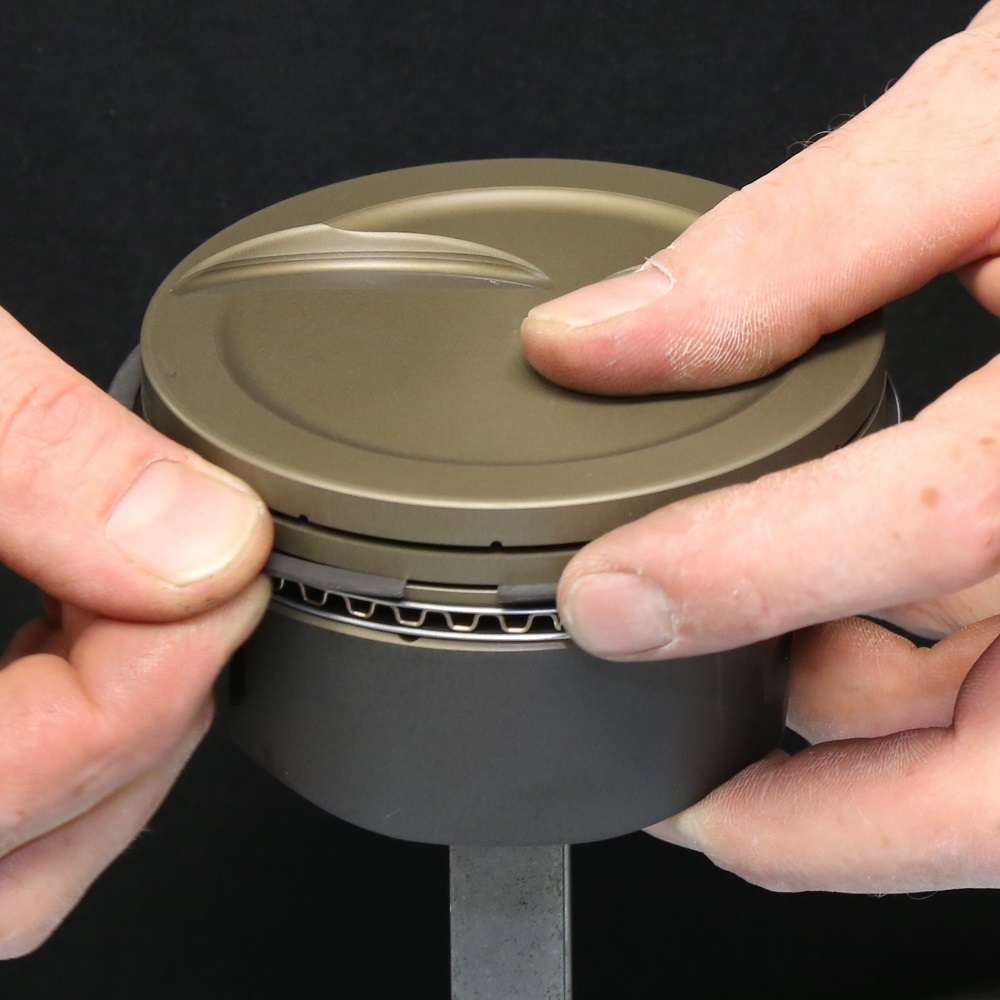
Types of Pistons
Pistons are critical components in engines, and their design greatly impacts performance. Different types of pistons cater to various engine needs and applications. Here we will explore three common piston types: cast pistons, forged pistons, and hypereutectic pistons.
Cast pistons
Cast pistons are made using the casting process. Molten aluminum is poured into a mold, creating the piston shape. These pistons are lightweight and cost-effective. They are commonly used in standard passenger vehicles. Cast pistons are less durable under extreme stress, making them unsuitable for high-performance engines.
Forged pistons
Forged pistons are created by shaping heated aluminum under high pressure. This process makes them denser and stronger. These pistons are ideal for high-performance or racing engines due to their durability. Forged pistons can handle extreme heat and pressure better than cast pistons. However, they are more expensive and slightly heavier.
Hypereutectic pistons
Hypereutectic pistons are created with a high silicone content mixed into aluminum. This silicone improves strength and heat resistance. These pistons expand less with heat, maintaining a consistent fit within the cylinder. Hypereutectic pistons are popular for their balance of durability and cost-efficiency. They are commonly used in both everyday vehicles and moderate-performance engines.
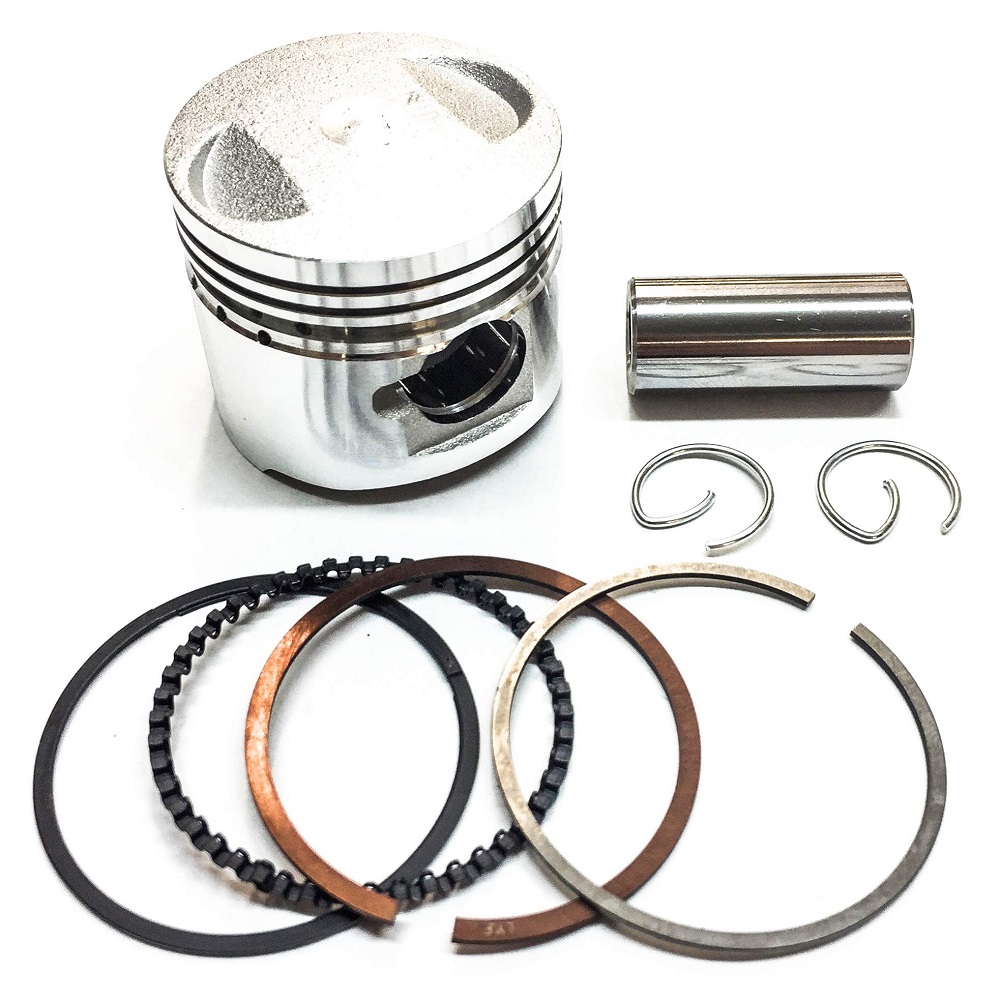
Common Types of Piston Rings
Piston rings play a critical role in engine operation and efficiency. They are precisely engineered to perform specific tasks within the cylinder. Understanding their types helps in choosing the best option for specific engine needs.
Compression rings
Compression rings are located at the top of the piston. They create a tight seal in the combustion chamber. This seal ensures optimal compression for fuel combustion. Compression rings also prevent gases from leaking into the crankcase. Made of durable materials, they withstand extreme pressure and heat.
Oil control rings
Oil control rings manage oil distribution within the cylinder. They scrape excess oil off the cylinder walls. This prevents too much oil from entering the combustion chamber, reducing oil consumption. Proper oil control ensures smooth engine operation and minimizes wear. These rings are vital for maintaining an engine’s cleanliness.
Scraper rings
Scraper rings are similar to oil control rings but focus more on cleaning. They remove unwanted debris from the cylinder walls, ensuring smooth piston movement. Scraper rings help reduce wear by maintaining clean surfaces. They provide additional oil control for improved lubrication and engine life.
Functions of Piston Rings
Piston rings are essential for maintaining engine efficiency and proper operation. They perform critical functions that contribute to the engine’s durability and performance. Understanding these functions helps in appreciating the importance of high-quality piston rings.
Sealing the combustion chamber
Piston rings create an airtight seal between the piston and cylinder wall. This seal ensures proper compression in the combustion chamber. Without this, engines lose power and fuel efficiency. Compression rings, located at the top of the piston, primarily handle this function. They prevent gases from escaping into the crankcase, ensuring maximum power output.
Regulating oil consumption
Oil control rings play a key role in oil regulation. They scrape excess oil from the cylinder walls and ensure it is reused properly. This prevents oil from entering the combustion chamber. Proper oil regulation minimizes oil consumption and keeps the engine clean. It also ensures smooth piston movement and reduces internal wear.
Heat dissipation
Piston rings assist in transferring heat from the piston to the cylinder wall. This heat transfer prevents overheating in the engine. Compression and oil control rings are often made from durable, heat-resistant materials for this purpose. Efficient heat dissipation helps maintain engine reliability and longevity while supporting safe operation.
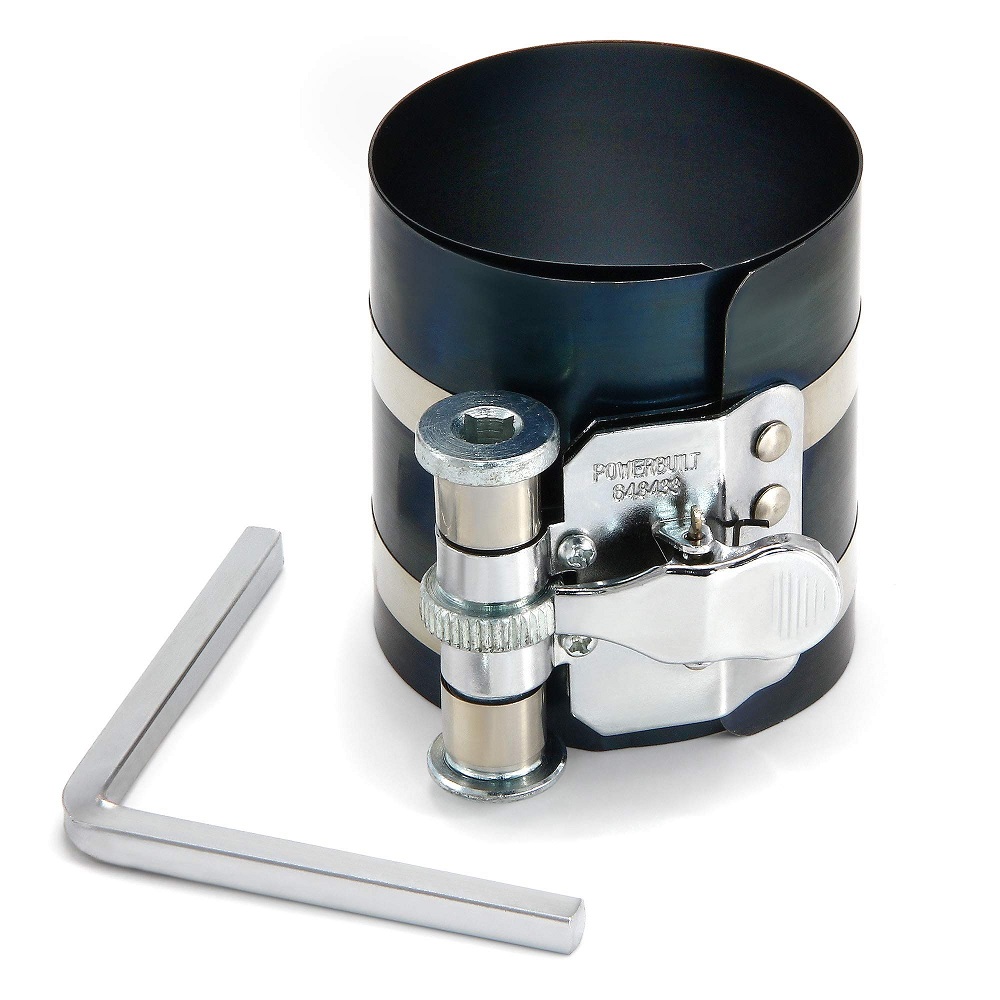
Benefits of High-Quality Pistons and Rings
High-quality pistons and rings are essential for a well-functioning engine. They directly impact engine performance, fuel efficiency, and emission levels. Upgrading to premium components can significantly enhance the overall driving experience and the longevity of the engine.
Improved engine performance
High-quality pistons and rings ensure a tight seal within the combustion chamber. This improves compression, leading to better power output. Strong materials in these parts withstand extreme heat and pressure. This makes the engine more reliable during demanding tasks. Enhanced performance is especially noticeable in high-speed or heavy-duty operations.
Enhanced fuel efficiency
Properly functioning pistons and rings prevent fuel wastage. They create an airtight seal, maximizing combustion efficiency. This optimizes the use of every drop of fuel. Oil control rings also reduce excess oil consumption, further improving efficiency. High-quality components significantly contribute to lower running costs over time.
Reduced emissions
Piston rings prevent oil and gases from leaking into the combustion chamber. This minimizes unburned fuel and oil entering the exhaust. As a result, harmful emissions are reduced. Advanced materials and coatings in high-quality pistons further lower pollution levels. These parts help meet stricter environmental regulations, making vehicles more eco-friendly.
Signs of Worn Piston and Rings
Over time, pistons and rings can wear out due to constant use. Recognizing the signs of wear is crucial to prevent severe engine damage. Below are common indicators of worn piston and rings.
Loss of engine power
A worn piston or rings can reduce engine compression. This results in lower power output. The engine struggles during acceleration or climbing hills. Drivers often notice a lack of response under heavy loads. Reduced compression also affects fuel efficiency negatively.
Excessive oil consumption
Damaged piston rings fail to regulate oil properly. Excess oil enters the combustion chamber. This leads to higher oil consumption. You may need to refill engine oil frequently. The issue also causes carbon buildup, which can damage other parts.
Smoke from the exhaust
Blue or gray smoke indicates oil burning within the engine. This often signals worn piston rings. Black smoke may indicate incomplete combustion due to compression loss. Excessive smoke is a clear warning of potential engine trouble.
Addressing these issues promptly is essential. Ignoring the signs can lead to more costly repairs or engine failure. Regular maintenance helps detect problems early and keeps your engine running efficiently.
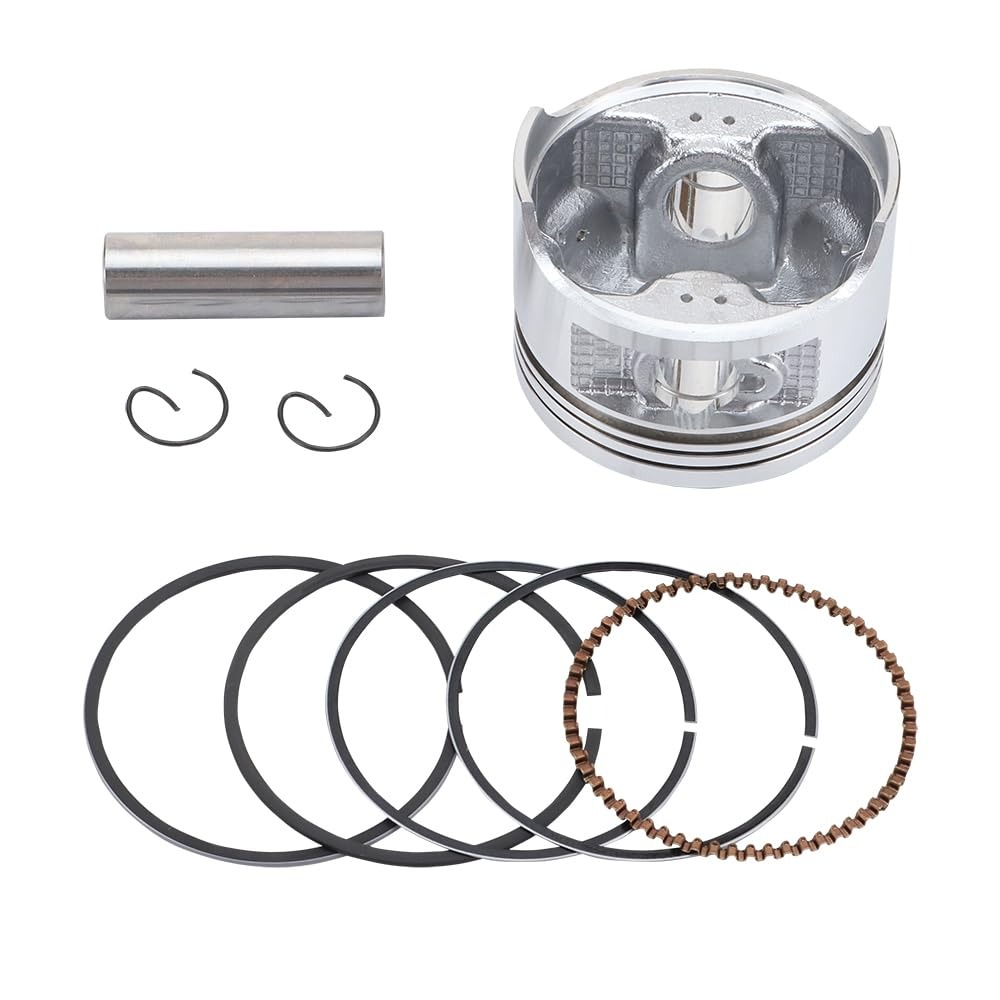
Maintenance and Replacement of Pistons and Rings
Proper maintenance of pistons and rings ensures optimal engine performance and longevity. Timely inspections and replacements can prevent severe engine issues.
How to inspect piston rings
- Check for warning signs: Look for loss of power, excessive oil consumption, or unusual exhaust smoke.
- Remove the piston: Disassemble the engine to access the piston and rings.
- Inspect for damage: Look for cracks, wear, or warping on the piston rings.
- Measure ring gap: Use a feeler gauge to measure the end-gap of the piston ring.
- Examine ring grooves: Check for debris or damage in the piston ring grooves.
Regular inspections help detect worn parts early, reducing the risk of engine damage.
Steps for replacement
- Drain engine oil: Remove old oil to avoid contamination.
- Disassemble the engine: Detach components to access the pistons and rings.
- Remove old rings: Use a ring expander to avoid damaging the piston.
- Clean the grooves: Clear any carbon deposits from the piston grooves.
- Install new rings: Fit the new rings carefully, checking their alignment.
- Reassemble the engine: Put all components back and tighten bolts to specifications.
- Test the engine: Check for leaks and ensure smooth operation.
Replacing worn piston rings in time ensures better performance and fewer repairs.
Preventive maintenance tips
- Use quality engine oil: High-grade oil reduces wear on pistons and rings.
- Change oil regularly: Replace oil as per the manufacturer’s schedule.
- Avoid engine overheating: Maintain proper cooling to protect pistons and rings.
- Inspect during services: Check piston and rings during routine maintenance.
- Address issues promptly: Fix oil leaks or unusual sounds immediately.
Preventive care extends the lifespan of pistons and rings, maintaining engine health.
Innovations in Piston and Rings Technology
Innovations in piston and rings technology aim to boost engine performance and longevity. Modern manufacturing techniques have introduced advancements that enhance functionality, reduce wear, and improve efficiency.
Advanced materials used
Engine pistons and rings now utilize advanced materials to withstand greater stress. Aluminum alloys are combined with high-strength elements for durability. These materials offer lightweight designs that reduce energy loss during motion. Titanium is used in some performance-oriented engines due to its exceptional strength and heat resistance.
Additionally, composite materials are being tested for future use. They promise enhanced durability and reduced thermal expansion. Such innovations allow engines to perform reliably under extreme conditions.
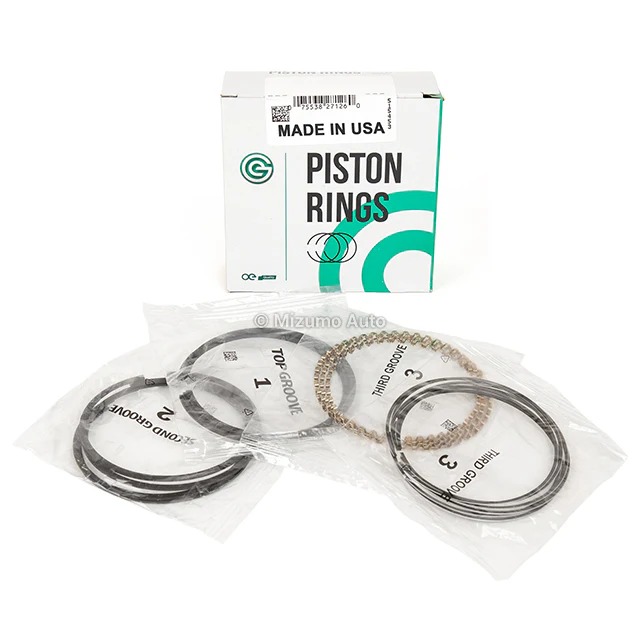
Coating technologies for better durability
Modern pistons and rings feature advanced coatings to increase their lifespan. Diamond-like carbon (DLC) coating reduces friction significantly. It minimizes wear on both pistons and cylinder walls. Thermal barrier coatings protect pistons from intense heat during combustion.
Innovations include ceramic coatings, which provide high heat resistance and improve energy transfer. These coatings ensure smoother performance and lower engine noise. Specialized oil-resistant coatings further reduce oil-related issues and enhance sealing efficiency.
Future advancements in design
Engine component designs are evolving rapidly. Piston manufacturers are creating thinner profiles with optimized shapes to enhance air and fuel mixing. Lightweight designs improve balance and reduce strain on connected parts.
Smart piston technologies are being developed with integrated sensors. These sensors monitor performance and send data for engine adjustments. 3D printing shows promise for creating custom piston designs with unmatched precision.
The future will witness designs focused on energy efficiency, eco-friendliness, and reduced emissions. Innovations continue to push piston and ring technology toward greater reliability and sustainability.
The Impact of Riding Style on Piston and Ring Longevity
How Riding Habits Influence Wear
The way a motorcycle is ridden can significantly impact the longevity of its pistons and rings. Aggressive riding styles, such as hard acceleration and abrupt braking, can cause excessive stress on these components. This behavior leads to increased wear and may lead to premature failure of the piston rings. Conversely, smooth and controlled riding can help maintain the integrity of the engine, thereby prolonging the lifespan of these critical parts.
Additionally, frequent high-revving can affect the performance of the engine, particularly in smaller displacement bikes. While it may be tempting to push the limits during spirited rides, riders should practice moderation to maintain engine health. Learning to ride more conservatively, especially in lower gears, can considerably extend the life of pistons and rings.
Importance of Adaptability
Riders should recognize that adapting their riding approach based on conditions can also significantly benefit their engine components. For instance, riding on rough roads may necessitate a gentler throttle application to avoid damaging the pistons and rings from jarring impacts. Likewise, understanding the difference between city riding, which often involves frequent stopping and accelerating, versus highway cruising, helps optimize the performance of the motorcycle.
By adjusting riding styles according to distinct circumstances, riders can strike a balance that favors the longevity of their engines. This adaptability will lead to more enjoyable rides while maintaining the performance and reliability that bikers expect.
Common Misconceptions About Pistons and Rings
Myths Surrounding Piston Performance
Many misconceptions exist regarding the role of pistons and rings in motorcycle engines. One common myth is that the more powerful the piston, the better the performance. While it is true that a high-performance piston can enhance power, it must be matched carefully with other components. An improperly matched piston can lead to issues such as excessive wear or even engine failure.
Additionally, some riders may believe that once a piston is installed, it requires little to no maintenance. However, regular inspections are essential to detect signs of wear early. Overlooking minor issues may lead to major complications down the line. Understanding that pistons and rings require ongoing care and monitoring helps debunk these harmful myths.
Misunderstandings about Ring Damage
Another common misconception is that piston rings will last indefinitely as long as the motorcycle is well-maintained. The truth is that piston rings experience natural wear over time and must be replaced periodically. Factors such as type of oil used, riding style, and engine load all play roles in the lifespan of the rings. Staying attentive to changes in engine performance is vital for deciding when to replace worn or damaged rings.
Furthermore, some riders may think that fitting larger rings will improve performance. However, this may create compatibility issues within the cylinder, potentially leading to poor combustion and increased emissions. Educating themselves about the operating characteristics and constraints of their specific motorcycle can help riders avoid these pitfalls.
Conclusion: The Importance of Pistons and Rings in Motorcycle Performance
Celebrating the Essential Components
In conclusion, piston and rings are essential components of motorcycle engines, playing critical roles in performance and longevity. Understanding their functions and interdependence can lead to better maintenance and improved riding experiences. The importance of selecting high-quality parts cannot be overstated, as these choices directly influence engine functionality.
Committing to Knowledge and Education
Riders are encouraged to commit to learning more about their motorcycles and the components that make them work. With the right knowledge, they can make informed decisions regarding upgrades and maintenance. This understanding fosters a deeper connection to the motorcycle, enhancing the enjoyment of riding.
Empowering Your Riding Experience
Ultimately, the relationship between pistons, rings, and overall engine performance empowers the entire riding experience. By prioritizing maintenance, understanding riding habits, and recognizing the importance of these components, riders can enjoy a thrilling and reliable journey on the open road. So as you embark on your next motorcycle adventure, take pride in the mechanical marvel that supports your passion, and appreciate the intricacies of the pistons and rings that contribute to the thrill of the ride.
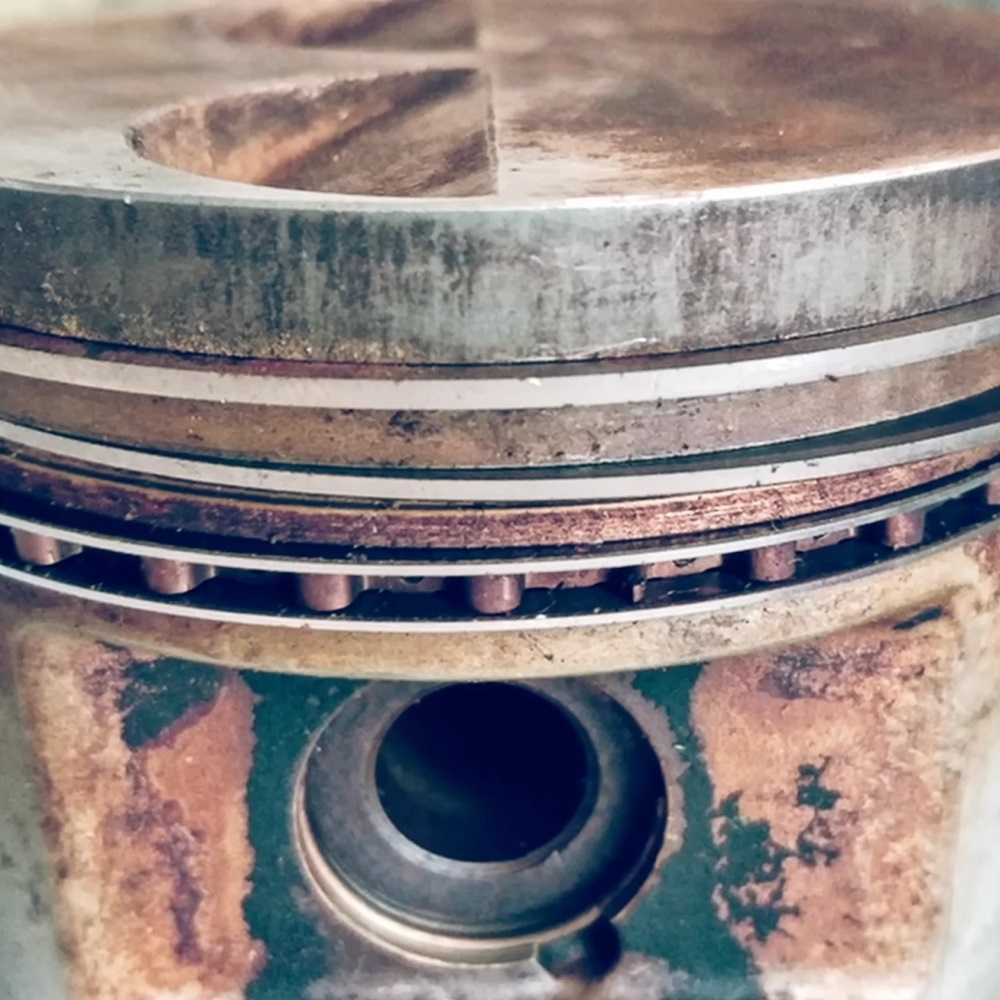
Leave a Reply